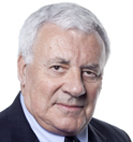By now older SMSF investors with funds in pension mode should realise that, when they line up at the start of the superannuation performance stakes, they are literally the backmarkers. They have a handicap, which, in current circumstances, makes it very difficult to achieve a positive overall investment result.
Accepting erosion
That was my sobering realisation when I sat down to review how my own SMSF was performing. It wasn’t that the fund was too defensive in its asset allocation, with too much in cash. In fact my SMSF currently has just over 70% of its assets in shares (including hybrid securities as equities). This fairly aggressive asset allocation hasn’t been enough to offset the effects of current very low interest rates on the remaining funds in fixed interest and cash.
More importantly, it hasn’t helped to maintain total funds in my SMSF. That’s because the government’s regulations insist on funds in pension phase paying out rising percentages of their assets as members get older. Investors need to take this hurdle into account when they assess their overall financial position.
Simply put, SMSF investors who attempt to invest their retirement savings with some degree of safety will struggle in the current climate to achieve high enough investment returns to cover their fund’s minimum required pension payout.
The result: total SMSF savings can be subject to an inevitable erosion. This is no accident; the superannuation rules have been designed by the government to stop retirees amassing higher savings in their fund.
Now, of course, this isn’t the end of the world for older SMSF members. The higher payouts can be banked or spent; the rules just say the money can no longer stay in the tax-free environment of a pension-paying super fund. So, when I review my situation, it’s necessary to remember these limitations.
My strategy
My conservative investment approach meant that in 2016-17, with just under 56% in equities (excluding hybrids), the fund earned 6.1% on its assets. In the previous year, with a 54% equity weighting, it earned only 4.8%.
The fund has been steadily increasing its overseas holdings in the last three or four years. Including CSL (because of its overwhelming foreign income), overseas equity holdings have risen from just under 20% to over 23% between September 2017 and 2018. For a moderately risk prone investor this could prove uncomfortable if there was a big dip on Wall Street. The biggest overseas stake is in the ETF which tracks the S&P 500 index.
Locally, most SMSF investors are now finding it harder to achieve secure dividend income with Telstra’s weaker dividends providing only about 4.7% pre-tax yields. Similarly, the once reliable bank dividends may now be potentially wobbly.
One strategy that has helped SMSF investors to reap steady income has been to invest in infrastructure stocks. But there are questions about how long this can survive: already in the last few years, the big investors have removed a couple of listed infrastructure groups and APA looks like it will be the next to go.
For my SMSF, that will put heavier reliance on Transurban, which, after its recent capital raisings, is more than 9% of the equities portfolio. Like the overseas S&P holding, success and rising prices can create a dilemma via more concentrated risk.
My current strategy is to try and minimise obvious risks; the fund has less than 5% in listed property, part of it through the ETF covering the listed property trusts. My anxiety about the prospect of further problems in the retail property sector means I am unlikely to go bargain hunting among bank shares, which now account for about 16% of my equities
My risk averse approach also has kept me from taking full advantage of the recovery in resources. A modest 5% is in BHP, with about the same weighting in energy stocks. My suspicion is that any weakness in the $US will affect resource prices – and I have only a modest $A-$US hedge through a currency ETF.
So, for the moment I’ve adopted Britain’s World War 2 motto: Keep calm and carry on.
Important: This content has been prepared without taking account of the objectives, financial situation or needs of any particular individual. It does not constitute formal advice. Consider the appropriateness of the information in regard to your circumstances.

